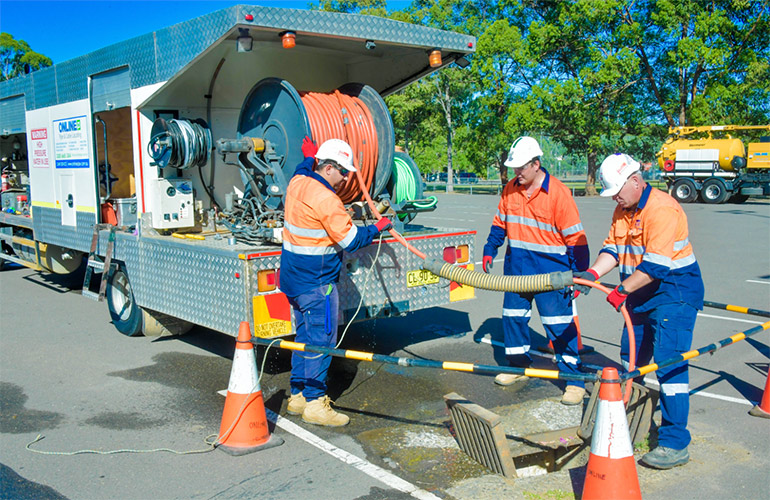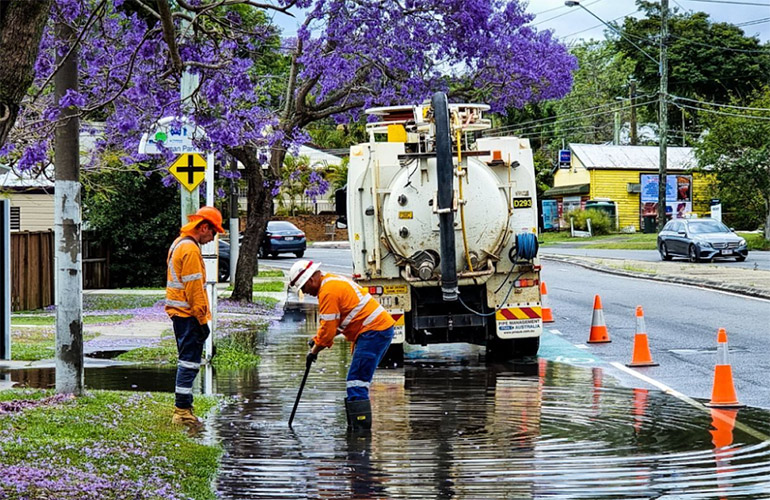
The Role of Stormwater Drain Systems
People often overlook stormwater drain systems, but they play a critical role in maintaining the safety and functionality of our properties. The design of these drainage systems redirects rainwater and storm runoff away from our homes and buildings, preventing potential flooding and water damage. While they quietly perform their duty beneath the surface, it’s essential to understand their importance and the necessity of regular maintenance.
Regular stormwater drain cleaning is more than just a recommendation; it’s a crucial aspect of responsible property ownership. Neglecting these systems can have dire consequences. When stormwater drains become clogged or inefficient, they can lead to costly property damage, erosion, and even health hazards. In this blog, we’ll delve into the world of stormwater drains, from their function to the cleaning process and the benefits of regular maintenance.
Understanding Stormwater Drain Systems
Stormwater drain systems are the unsung heroes of our urban landscapes, working diligently to manage excess rainwater. These systems comprise a network of pipes, catch basins, and underground chambers designed to capture, convey, and store stormwater runoff. Their primary purpose is to prevent flooding by directing rainwater away from streets, properties, and public spaces.
It’s essential to differentiate between stormwater drains and sewage drains. While sewage drains handle wastewater from our homes and businesses, stormwater drains deal exclusively with rainwater and surface runoff. Mixing these systems can lead to contamination and environmental issues.
Stormwater drains prevent flooding and play a critical role, and we cannot overstate their importance.
During heavy rains or storms, they collect rainwater and channel it into nearby water or treatment facilities, ensuring that streets and properties remain dry and safe.
Signs That Your Stormwater Drain Needs Cleaning
Identifying the signs of a clogged or inefficient stormwater drain is crucial for timely maintenance. Common symptoms include visible pooling of water after rain, slow-draining water in catch basins, and unpleasant odours emanating from stormwater grates. If addressed, these issues can have severe implications.
Pooling water can lead to soil erosion, structural damage, and even the breeding of disease-carrying insects like mosquitoes. Slow-draining water in catch basins can disrupt the proper functioning of the drainage system, increasing the risk of flooding during heavy rainfall. Unpleasant odours may indicate stagnant water and the potential for bacterial growth, posing health risks to residents and wildlife.
To help readers identify these issues more quickly, we’ll include images and diagrams illustrating the signs of a troubled stormwater drain system.
The Cleaning Process

Cleaning a stormwater drain is a systematic process requiring expertise and the right equipment. Professional drain cleaning services employ a series of steps to ensure thorough maintenance.
The first step is a visual inspection, where professionals assess the condition of the drain system and identify blockages or damage. Next, they use specialised tools like high-pressure water jetting or mechanical augers to remove debris and obstructions from the pipes and chambers. This process restores the system’s flow capacity.
Safety is paramount during drain cleaning. Professionals take precautions to protect themselves and the environment, including using appropriate personal protective equipment (PPE) and following environmental guidelines for wastewater disposal.
Benefits of Regular Stormwater Drain Cleaning
Regular cleaning of stormwater drains offers a range of benefits. First and foremost, it prevents blockages and overflows during heavy rains, safeguarding your property and the surrounding environment. Maintaining clean drains reduces the risk of erosion, property damage, and spreading waterborne diseases.
Clean stormwater drains also have significant environmental benefits. They help filter rainwater, removing pollutants and sediments before it enters rivers, lakes, or oceans. It promotes cleaner water bodies and healthier ecosystems.
Moreover, investing in regular maintenance can lead to cost savings in the long run. Preventing property damage, erosion control, and avoiding potential fines for non-compliance with local regulations can all contribute to financial security.
Professional Cleaning
Professionals perform stormwater drain cleaning to prevent blockages and ensure proper drainage during heavy rainfall. This process typically involves several steps and specialized equipment. Here’s how professionals typically do stormwater drain cleaning:
Assessment and Planning:
Professionals begin by assessing the condition of the stormwater drain system. They identify potential problem areas, such as clogs, debris, or damage, using visual inspections, cameras, or other diagnostic tools.
Based on their assessment, they create a cleaning plan that outlines the necessary steps and equipment required for the job.
Safety Precautions:
Safety is a top priority. Professionals wear appropriate personal protective equipment (PPE), such as gloves, safety vests, and helmets, to ensure their safety while working in potentially hazardous environments.
Traffic Control:
If stormwater drains are located in roadways or public areas, professionals may need to implement traffic control measures to ensure the safety of both workers and the public.
Clearing Debris:
Professionals use a variety of tools to remove debris from stormwater drains. These tools may include shovels, rakes, and mechanical grabbers. The goal is to clear leaves, sticks, trash, and other debris that can obstruct the flow of water.
Jetting and Flushing:
High-pressure water jetting equipment is commonly used to clear blockages and clean the interior of stormwater drains. This equipment can break up and flush away stubborn clogs and sediment buildup.
CCTV Inspection:
After the initial cleaning, professionals often use closed-circuit television (CCTV) cameras to inspect the interior of the drain system. This helps them identify any remaining issues or potential future problems.
Repair and Maintenance:

If any damage is found during the inspection, professionals may need to repair or replace damaged sections of the stormwater drain system. This can involve excavation and pipe replacement, which requires specialised equipment and expertise.
Preventive Measures:
To prevent future blockages and maintain proper drainage, professionals may recommend and implement preventive measures. This can include installing debris screens, sediment basins, or regular maintenance schedules.
Environmental Compliance:
Professionals ensure that they comply with all environmental regulations when cleaning stormwater drains. This includes proper disposal of debris and wastewater to prevent pollution.
Documentation:
Professionals keep detailed records of their cleaning and maintenance activities. This documentation helps track the condition of the stormwater drain system over time and assists in planning future maintenance.
Community Education:
Some professionals engage in community education to raise awareness about the importance of keeping stormwater drains clear. They may conduct outreach programs to encourage responsible disposal of waste and debris.
Stormwater drain cleaning is essential to prevent flooding, water pollution, and other potential hazards associated with blocked drains. Hiring trained professionals ensures that the job is done safely and effectively, helping to protect the environment and public safety.
Local Regulations and Compliance
Understanding local stormwater drainage regulations is essential for responsible property ownership. Many areas have strict rules to protect water quality and prevent flooding. Non-compliance can result in fines and legal issues.
We’ll inform readers about these regulations, explain their significance, and provide resources for understanding and adhering to local laws. Complying with regulations is a legal requirement and a responsible way to protect the environment and the community.
Conclusion
In conclusion, the need for stormwater drain cleaning is not merely a matter of property upkeep; it’s a critical aspect of environmental stewardship and public safety. Regular maintenance prevents flooding, protects property, and ensures the cleanliness of our water bodies. You can proactively maintain efficient stormwater drain systems by understanding the signs, cleaning processes, and benefits.
We encourage readers to prioritise regular maintenance and compliance with local regulations. Doing so safeguards their properties and contributes to cleaner, healthier communities and ecosystems.
Contact your best plumber for further information and plumbing installation service with stormwater drain cleaning.
This comprehensive blog outline provides detailed information on stormwater drain systems, their maintenance, and the importance of responsible property ownership in maintaining efficient drainage. Each section aims to educate readers about the significance of cleaning stormwater drains.
Images: Supplied.
This is a sponsored article produced in partnership with Metropolitan Plumbing.






